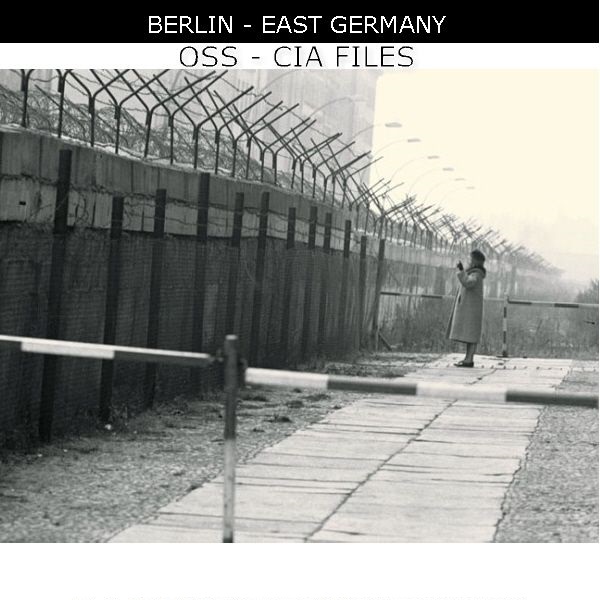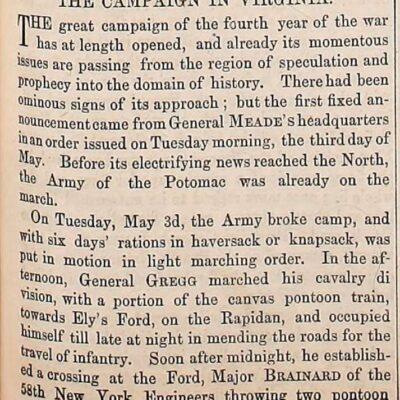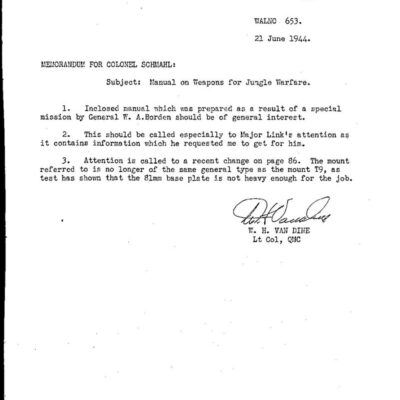
Berlin – East Germany CIA and OSS Files
$19.50
Description
Berlin 1943-1962: CIA and OSS Files Overview
Timeline of Main Events (1943-1962)
This timeline is based on the provided description of the “Berlin – East Germany CIA and OSS Files”. Specific dates within the broader periods are not detailed in the source.
- 1943-1945: Destruction of Berlin during World War II: The files cover the period of heavy Allied bombing and the final battles for the city as World War II drew to a close.
- Post-1945: Soviet Military Actions and Plans: The files include information regarding the activities and strategic thinking of the Soviet military in occupied Germany and particularly in Berlin after the war.
- Post-1945: Establishment and Maintenance of American Intelligence Presence in Berlin: The documents detail the efforts of the OSS (later CIA) to establish and operate intelligence networks and infrastructure within Berlin. This includes internal memoranda on the conduct of operations.
- Period Leading up to March 1948: Growing Tensions: The files likely contain intelligence reporting reflecting the increasing tensions between the Allied powers and the Soviet Union in Berlin.
- March 1948: March Crisis: The files specifically mention the “1948 March Crisis,” suggesting documentation of a significant confrontation or event during this month. (Further detail on the nature of this crisis would require access to the files themselves).
- June 1948 – May 1949: Berlin Airlift: While not explicitly dated in the summary, the mention of the “Berlin Airlift” indicates that the files cover this crucial period when the Western Allies airlifted supplies to West Berlin in response to the Soviet blockade.
- Early Post-Airlift Period: Suppression of Revolt in East Germany: The files contain information related to the Soviet and East German government’s actions in suppressing unrest or revolts in East Germany. The specific timing of these events within the broader timeframe (post-1949 to 1962) is not specified.
- Mid-to-Late 1950s: The Berlin Tunnel: The inclusion of “the Berlin Tunnel” indicates documentation of this significant intelligence operation, which involved the construction of a tunnel to tap into Soviet communication lines in East Berlin. The exact years of its operation would be detailed within the files.
- August 1961: The Berlin Wall: The files cover the construction of the Berlin Wall in August 1961 by the East German government, with Soviet backing, to prevent the flow of East Germans to the West.
- Early 1961: Oleg Penkovsky Begins Spying: The files include information from Oleg Penkovsky, who began spying for the West early in 1961.
- 1961-1962: Penkovsky’s Espionage Activities: The files contain information provided by Oleg Penkovsky, including descriptions of internal tensions within the Soviet Politburo concerning the Berlin situation. He made several clandestine trips to the West during this period to meet with his handlers.
- Throughout 1943-1962: The files contain various forms of intelligence reporting, ranging from raw field reports to finished intelligence analyses intended for policymakers. This includes Current Intelligence Reports, National Intelligence Estimates (NIEs), and Special National Intelligence Estimates (SNIEs) concerning Berlin and East Germany.
Cast of Characters
This list identifies the principal people explicitly mentioned in the provided source description.
- Oleg Penkovsky: A Soviet military intelligence (GRU) officer who held a high-level position within the Soviet General Staff. He began spying for the CIA early in 1961, providing valuable intelligence on Soviet military matters and internal political dynamics, particularly as they related to the Berlin situation and Khrushchev’s leadership. He met clandestinely with Western intelligence handlers during his trips to the West.
- Nikita Khrushchev: The Premier of the Soviet Union during the latter part of the period covered by the files (specifically mentioned in relation to internal tensions in the Politburo as described by Penkovsky regarding Berlin). His policies and leadership decisions significantly impacted the Cold War and the situation in Berlin, culminating in the construction of the Berlin Wall.
Berlin – East Germany CIA and OSS Files
552 pages of selected OSS and CIA files covering Berlin and East Germany from 1943 to 1962. Documents cover the destruction of Berlin during World War II, Soviet military actions and plans, intelligence operations, the 1948 March Crisis, the Berlin Airlift, suppression of revolt in East Germany, the Berlin Tunnel, and the Berlin Wall.
Berlin seems to have figured one way or another in most of the intelligence operations mounted in Europe during the first two decades of the Cold War. Files include documents dealing with Oleg Penkovsky the CIA’s agent inside Soviet military intelligence and on the General Staff, who was privy to information at the highest levels of the Soviet military. Penkovsky describes the internal tensions undermining Khrushchev’s position in the Politburo as they applied to the Berlin situation. Penkovsky began spying for the West early in 1961. He made several trips to the West, each time meeting clandestinely with his handlers.
Files include: Internal memoranda concerning the conduct of operations or the establishment and maintenance of an American intelligence presence in Berlin. Intelligence reporting from the field on specific topics. These run the gamut from raw intelligence reports from the field to more finished products ultimately intended for dissemination to intelligence analysts and other recipients. In general, this kind of reporting would not be seen by policymakers until it had been subjected to some level of analysis and editing in Washington. Finished intelligence produced in Washington, DC, and intended for distribution to a widespread audience in the intelligence and policymaking communities. Included in this category are current intelligence reports, which keep policymakers and intelligence officers up to date on events as they happen, and National Intelligence Estimates concerning Berlin. National Intelligence Estimates, or NIEs’ are at the pinnacle of the American intelligence process and represent the agreed position of the agencies responsible for producing intelligence on a given topic. They are designed to provide policymakers with regular, detailed analyses of diverse aspects of the world situation, including the policy objectives and likely actions of other nations and their military capabilities and potential. Although predictive in format, they frequently devote much space to weighing the merits of often conflicting pieces of evidence. Special National Intelligence Estimates (SNIEs) are shorter, more ad hoc analyses written when a more rapid response is needed.



Related products
-


Civil War: Army Navy Journal & Gazette Volume 1 (1863 – 1864)
$19.50 Add to Cart -


World War II Manual on Weapons for Jungle Warfare (1944)
$1.99 Add to Cart -

Holocaust Document Archive PDF file – Inventory Catalog of Document Collection
$3.94 Add to Cart -

Civil War Ulysses S. Grant’s Aide de Camp Orville E. Babcock’s Diaries & Court Documents
$3.94 Add to Cart